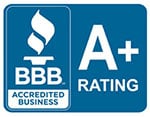Picture Perfect: Where to Install Fixed Windows in Your Home
There are a lot of options for windows out there. Some raise vertically to open, some slide to open, some crank outward, some tilt and others combine these methods. Then there are fixed windows (most often built as picture windows), which don’t open at all.
Choosing which of these windows to place in your new home can be frustrating, particularly if you’re deciding to install fixed windows. This article will help break down some of the factors that should go into this decision.

Fixed windows have advantages, but they shouldn’t be the only windows you use in your home.
Advantages and Disadvantages of Fixed Windows
Before deciding where to put fixed windows in your home, let’s look at what they do well, and what they’re poorest at.
Advantages:
-Great views. These windows tend to have decent sized sashes, without frames or screens interrupting your view of the outside.
-Security. It’s hard for intruders to get through these windows without breaking them (and risking setting off burglar alarms).
-Energy efficiency. Since these windows don’t have the ability to open, there are fewer areas for energy and air to escape from your home.
-Price. Since there are no mechanisms to open these windows, they tend to be affordable.
Disadvantages:
-Minimal airflow. Since these windows don’t open, air can’t transfer between the outside and inside of your home.
-Maintenance issues. If these windows are damaged, they generally need to be replaced. Since the windows are stationary, it can also be difficult to clean them.
-No adaptability. What you see is what you get. There’s no feasible way to open these windows.
Fixed Windows and Regulations
As you can see, fixed windows aren’t meant for the entire home. Even if you wanted to use them throughout your home, building codes wouldn’t allow you to do it.
Section 402.2 of the International Residential Code stipulates that at least 4 percent of a floor area in a home must be able to open to the outdoors for natural ventilation. Unless your home has lots and lots of doors on multiple floors, you will likely need windows that open on all floors in order to meet this requirement.
There are multiple reasons for this regulation. One of those is alternative ventilation. Windows and doors act as secondary egress points for ventilation purposes. What do those big words mean? Basically, they’re saying that when you’re doing a lot of cooking and smoke builds up in your kitchen faster than your ventilation system can handle, it’s important to have windows and doors that can open and let that smoky air out of your home.
It’s also important to have ventilation for home emergencies. When situations get dire, having multiple doors and windows that can open and serve as an escape route is crucial. For example, if your home was to catch fire and you only had one way to get outside, you could easily get trapped inside. Having multiple natural ventilation points can actually save lives.

Combining fixed windows with windows and doors that can open is a smart tactical decision.
Where Fixed Windows Might Be a Good Fit
If you’ve read this far, you’ve probably determined that fixed windows shouldn’t be installed all over your kitchen. But where might they belong?
The answer to this question really depends on your particular home, but there are some guidelines you can follow. If there’s a room or space that you can’t ever imagine yourself letting outside air into, even when the weather is nice — such as an entertainment room, dining room or hallway — fixed windows will be a sharp-looking and cost-efficient investment.
Of course, you might not have to choose. If you want to combine the benefits of picture windows with the multipurpose functionality of windows that open, consider segmenting your windows into fixed and opening elements.
For example, if your living room has nice views, you can divide your window opening into three parts. The center section can be a picture window, while the segments on both sides of it can be casement or sliding windows.
If you’re looking to install replacement windows in your Houston-area home, turn to Best Investments Siding and Windows. We’ve installed replacement windows in thousands of homes across Southeast Texas since 1977, and we have an A+ rating from the Better Business Bureau. To get a free quote, click here or call (281) 852-1866 today.




Recent Comments